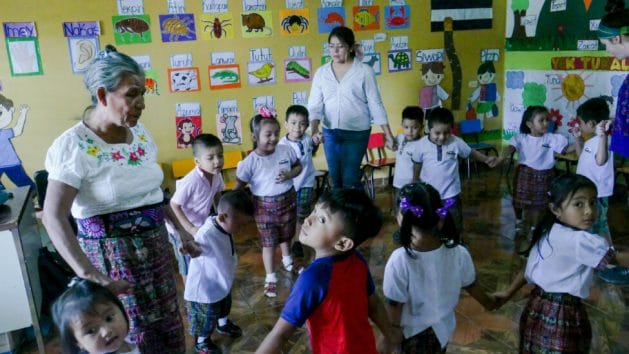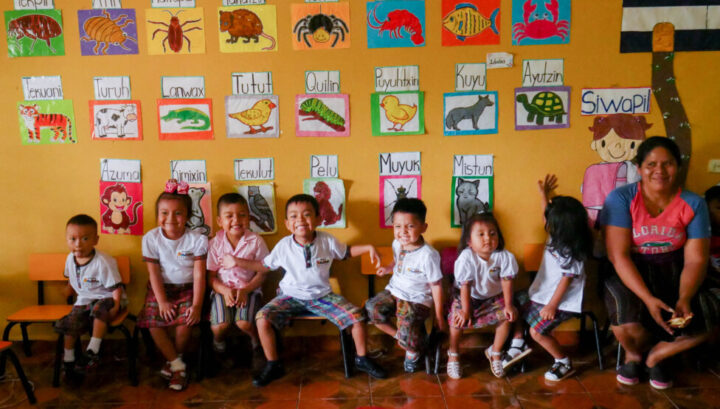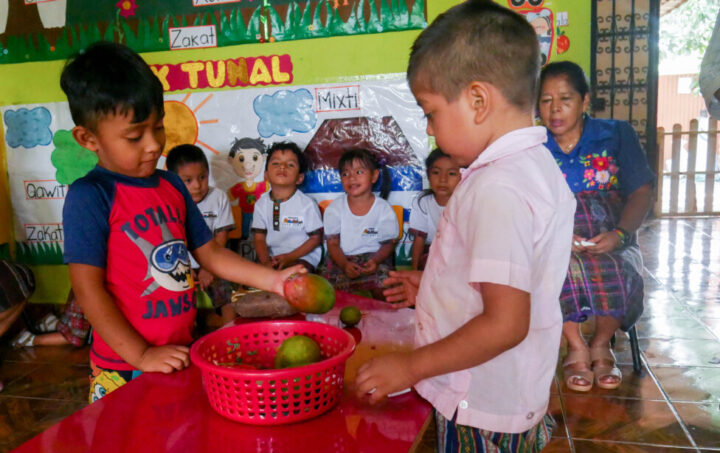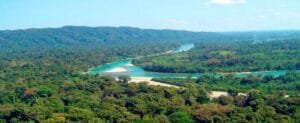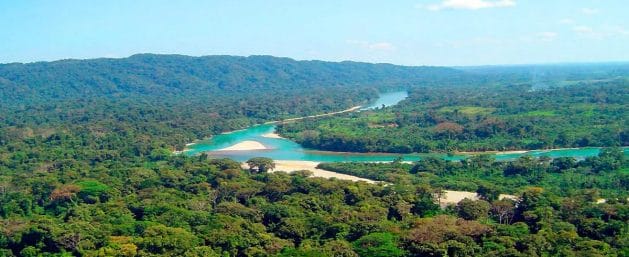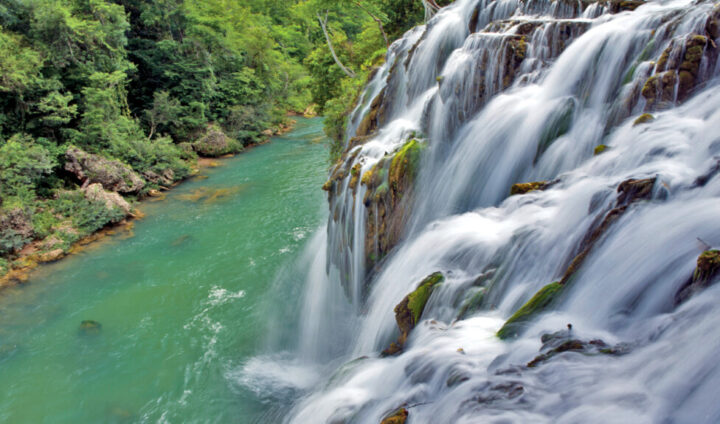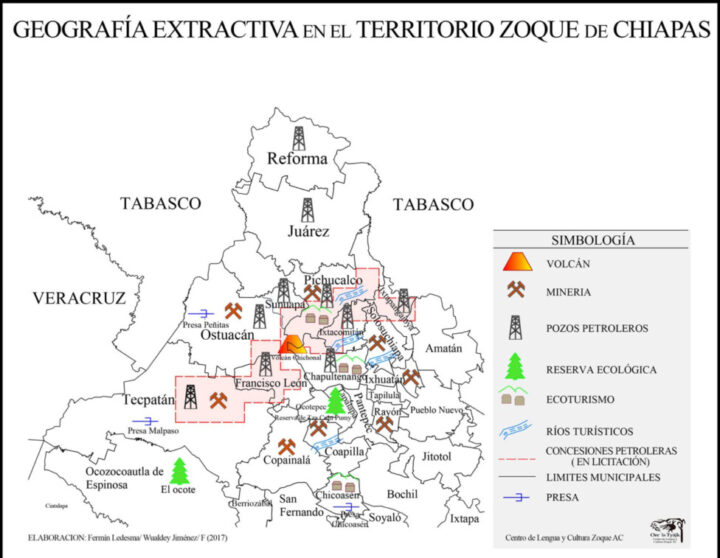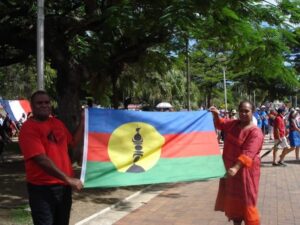
Asia-Pacific, Civil Society, Democracy, Editors’ Choice, Global Governance, Headlines, Human Rights, Indigenous Rights, Sustainable Development Goals, TerraViva United Nations

Kanak Pro-Independence supporters display the Kanak flag during a rally in the streets of Noumea prior to New Caledonia’s first referendum on Independence in 2018. Credit: Catherine Wilson/IPS
– It’s been 26 years since a peace agreement, the Noumea Accord, was signed following an outbreak of conflict in the 1980s between Kanak islanders and French armed forces in the French overseas territory of New Caledonia.
But the eruption of turbulent protests and unrest again two months ago has shown that the cleavage of indigenous political grievances with the French state remains deep in this group of islands located east of Australia in the southwest Pacific.
The centre of New Caledonia’s capital, Noumea, a popular holiday destination in the Pacific Islands, is usually abuzz with tourists patronizing sidewalk cafes. But many of the streets, now patrolled by French police, are deserted and eerily quiet.
The protests, which began in mid-May, escalated to armed clashes between activists and French security forces, resulting in ten deaths. And the destruction of homes, public buildings and looting of shops and businesses has had a devastating impact on the small island society. The cost of the damage is estimated to be more than USD 1 billion; at least 7,000 people have lost jobs and incomes, and the territory’s economy has suffered a major downturn.

Barricades were erected in the streets of Noumea when confrontations escalated between Pro-Independence activists and French police in May following the French Parliament’s adoption of electoral reforms in New Caledonia. Credit: Catherine Wilson/IPS
The unrest has revealed the gaping fracture between France’s determination to retain control of the territory and the indigenous Kanak islanders, who are riled at lack of progress toward their call for self-determination.
“We protested in the streets. We wanted to say to the French state, you must respect the Kanaks because France voted for the reforms without consent from us,” Jacques (his name has been changed), a Kanak activist in Noumea, told IPS.
He was speaking of the adoption of electoral changes in New Caledonia by the French Parliament, which would have opened the electoral roll to tens of thousands of recent migrant settlers, the majority from Europe.
About 41 percent of New Caledonia’s population is indigenous and many believe it would have led to the declining influence of their vote against rising numbers of Loyalists in future elections and referendums. The changing demographic balance between Kanaks and non-Kanaks is a longstanding grievance.
The uprising in the 1980s was driven by grievances about land dispossession, poverty, inequality, the absence of civil and political rights, and France’s policy of promoting migration from France to New Caledonia.
While French President Emmanuel Macron suspended the electoral reforms in mid-June, many Pro-Independence supporters are unappeased.
Jacques is among a group of Kanak activists who have set up a campaign site next to a main road on the outskirts of the capital. They are sitting around a table under a marquee, surrounded by flags and banners.
“We want our country to be decolonized, as it is written in the Noumea agreement. The French state is only interested in dominating the population here. If the French state stays here, we will have more violence,” Jacques claims.
The French government agreed in the 1998 Noumea Accord to grant New Caledonia more governing powers, recognition of Kanak culture and right to consultation, restrictions on the local electoral roll allowing only Kanaks and long-term residents to vote and the holding of referendums on its future political status.
But by 2021, three referendums had been held, all with majority outcomes, to remain part of France. There was a 43.33 percent vote for Independence in the first referendum in 2018, which increased to 46.74 percent in the second in 2020. But Kanaks, severely affected by the COVID-19 pandemic, boycotted the third referendum in 2021. The overwhelming Loyalist vote of 96.5 percent has never been accepted by Pro-Independence political parties, such as the Kanak and Socialist National Liberation Front (FLNKS).
“We firmly support the call by FLNKS for the UN to declare the result of the third referendum null and void due to the non-participation of the people of Kanaky. Voter turnout was below 50 percent of registered voters; hence, it cannot be taken as the legitimate wish of the silent majority,” the sub-regional inter-governmental organization, the Melanesian Spearhead Group, stated in 2021.
Kanak separatists’ determination to keep their aspirations alive, even though options for changing the political status quo through referendums have been exhausted, has led to an increasingly polarized political landscape. Some entrenched Loyalists believe that the French state should “take over the New Caledonian government because of all the political problems that we have,” Catherine Ris, President of the University of New Caledonia in Noumea, told IPS. And, “on the Pro-Independence side, we do not hear the moderate people anymore.”
The recent mobilization of the Field Action Coordinating Cell (CCAT) by the Pro-Independence Caledonian Union party was a sign of some Kanaks’ belief that their demands are not being met through the political process. The core group of activists were a major force behind the recent protests and the Cell’s leader, Christian Tein, is currently being held in a jail in France on charges related to the unrest. Similarly, the major presence of youths on the streets in May is evidence that a new generation has lost faith in the pace of social and political change.
“The younger people want the change now because in their lives they have experienced and seen a lot of hardship—the persecution of the Kanak people, the difficulties of getting a job,” Jacques emphasized. An estimated 45 percent of people in New Caledonia who don’t have a high school certificate are indigenous, and the Kanak unemployment rate is reported to be as high as 38 percent.
Yet the representation of Kanaks in the territory’s government and politics has steadily increased over the past two decades. The number of seats held by Pro-Independence politicians in New Caledonia’s 54 seat Congress rose from 18 to 25 between 2004 and 2014, while Loyalists witnessed a decrease from 36 to 29 seats, reports Australia’s Lowy Institute for International Policy.
In 2021, Louis Mapou, the first Kanak Pro-Independence President of the government, was elected. And, following the French national election this month, Emmanuel Tjibaou, a Kanak leader from the rural North Province, was voted in as one of New Caledonia’s two members of the National Assembly in Paris.
In the wider region, New Caledonia’s self-determination movement has the international support of other Pacific Island countries, especially those that have indigenous Melanesian populations, such as Papua New Guinea and Fiji, as well as Azerbaijan and Russia. And the French overseas territory has been on the United Nations’ Decolonization List since 1986.
Yet there are New Caledonians who are concerned about the viability of a New Caledonian state. The territory relies heavily on France’s fiscal support, which amounts to 20 percent of the local gross domestic product (GDP) and pays for public services, local economic development programs and civil service salaries.
“We have a good economy here,” Marcieux, a Frenchman who has lived in New Caledonia for 30 years, told IPS in Noumea. “It is easy to speak of independence, but, in reality, it is very difficult. You need a way to make independence.”
But, until the yawning political divisions laid bare by the events of May are addressed, it will be difficult for New Caledonia’s leaders to present a united will to President Macron and the French Parliament located more than 16,000 kilometres away.
However, Tjibaou, the new member of the French National Assembly, is the focus of hope that meaningful dialogue can emerge from the recent conflict. He told local media soon after his election this month that “we all have to offer a framework for discussions to resume between the three partners, which are France, the FLNKS and the Loyalists… we have to capitalize on this.”
IPS UN Bureau Report











